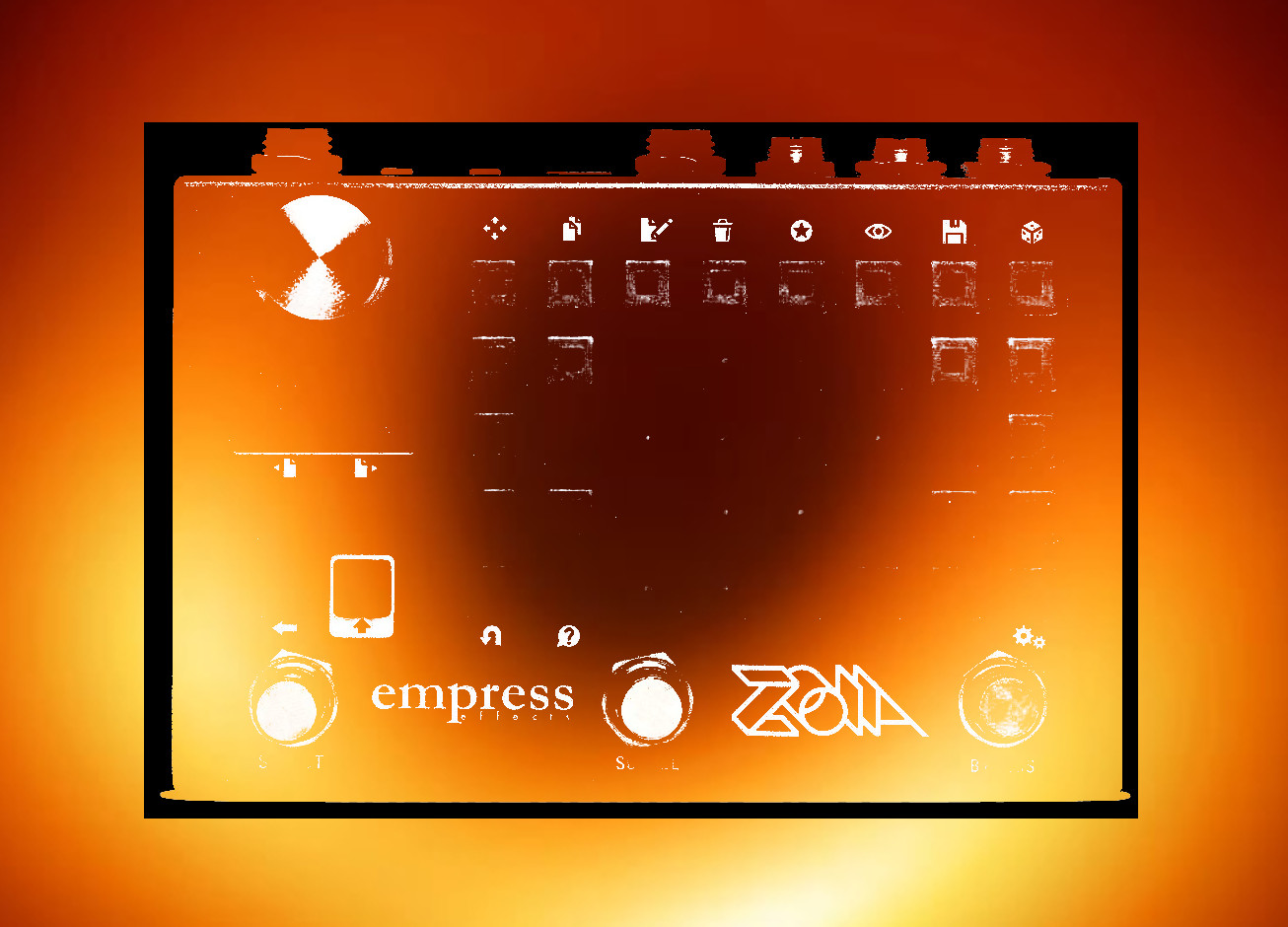Preamp73 uses frequency specifications from the classic Neve preamps to try to capture some of that magic. I had not (and still have not) used a real Neve when I started putting this patch together, but I found that Rupert probably knew what he was doing, because this ended up being a pretty nice, subtle EQ, that often enhanced, rather than reshaped, the input.
Of course, ZOIA doesn’t have transformers to saturate, but I tried to add some grit/warmth/distortion for that “direct-in” sound by running an overdrive (pushed) in parallel, so you could dial in exactly how much distortion you wanted. I placed this after the high-pass filter, before the shelving and peaking filters, because that was where it seemed to get the best results.
I also ended up adding a few frequencies and options that I thought might be useful.
The rest of the signal path is an input gain VCA (offering up to 18 dB of gain), a 18 dB/oct high-pass filter, a low-shelf filter, a bell filter for the mid-band, and a high shelf, followed by an output gain VCA (again up to 18 dB).
I’m actually releasing this in four forks: I also wanted to add a compressor to complete the “channel strip” approach, but a compressor isn’t ideal in every circumstance. So there are mono and stereo versions of the patch, with and without the compressor.
With the stereo versions you may get some momentary clipping as you adjust controls, but the patch itself is stable.
Controls:
Stompswitch:
Left — brings the drive mix in and out of the circuit
Front page:
The controls follow the signal path. All frequencies are selected by radio button.
An input gain control is followed by a high-pass filter, with fixed frequencies at 28Hz*, 50Hz, 80Hz, 160Hz, and 300Hz.
The drive section consists of a gain control and a mix control. The gain control was designed to offer (fairly) stable volume throughout its span. The mix control mixes the dry and drive signals in parallel. I did my best with this to provide options for subtle warmth and all-out console fuzz, and points between. I think it sounds pretty good; it won’t beat a preamp worth a few grand, but uh… it also doesn’t cost a few grand.
The low-shelf filter has +/-16 dB at 35Hz, 60Hz, 110Hz, and 220Hz. It also has a “steep slope” button that increases the Q of the filter. Between the high-pass and low-shelf, you have a lot of options for shaping the low-end.
The mid-band bell filter has +/-18 dB at 360Hz, 700Hz, 1.6kHz, 3.2kHz, 4.8kHz, and 7.2kHz. I couldn’t find any specifics about the Q of this filter, so I put in a button to let you select slopes from: 2 octaves (lime), 1 octave (surf), 1/2 octave (sky), and 1/3 octave (purple).
The high-shelf filter has +/-16 dB at 7.5 kHz, 10kHz, 12kHz, and 16kHz. I added the 7.5kHz option. The original 1073 only has an 12kHz, but other Neve preamps offer the other two frequency bands.
The compressor has ratios of 2:1, 4:1, 8:1, 12:1, and inf:1, with threshold, attack, and release controls.
The output gain is post-compressor (for those patches with compressor) and can be used for makeup gain.


